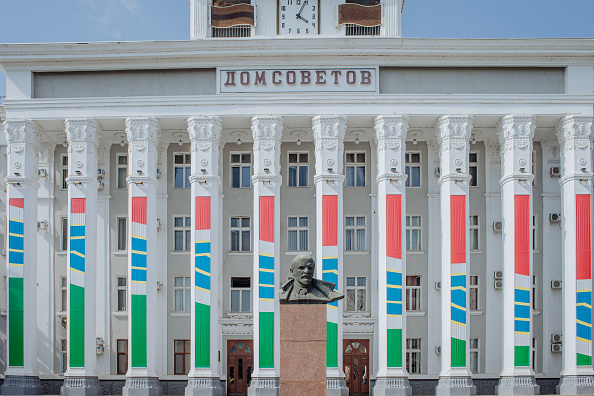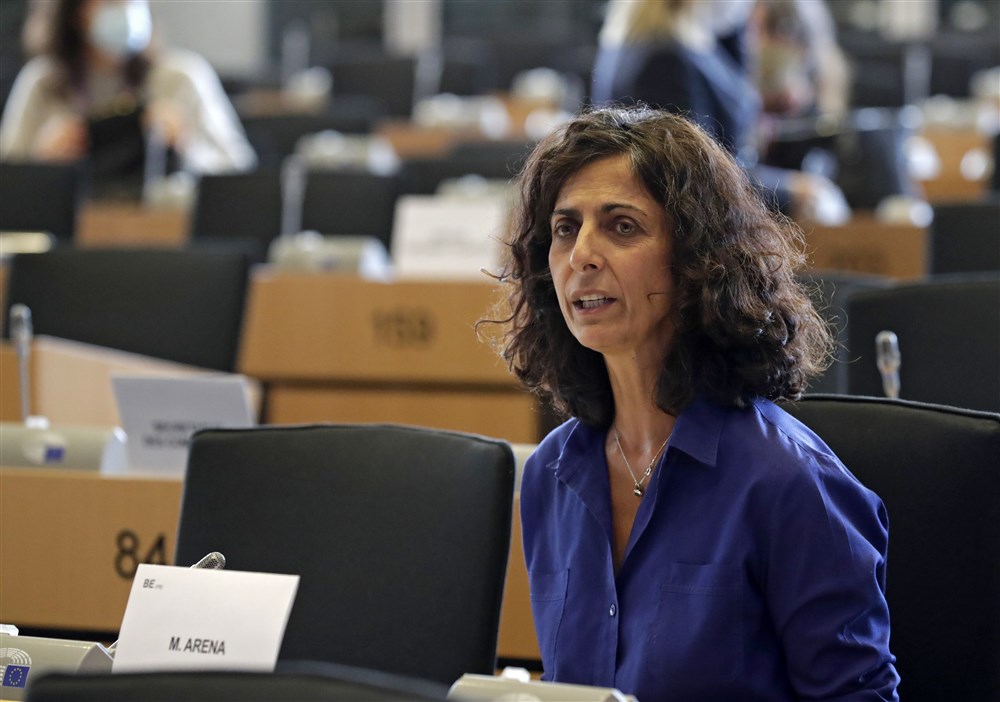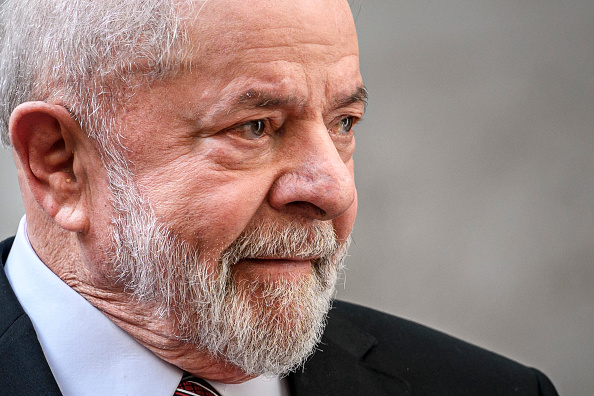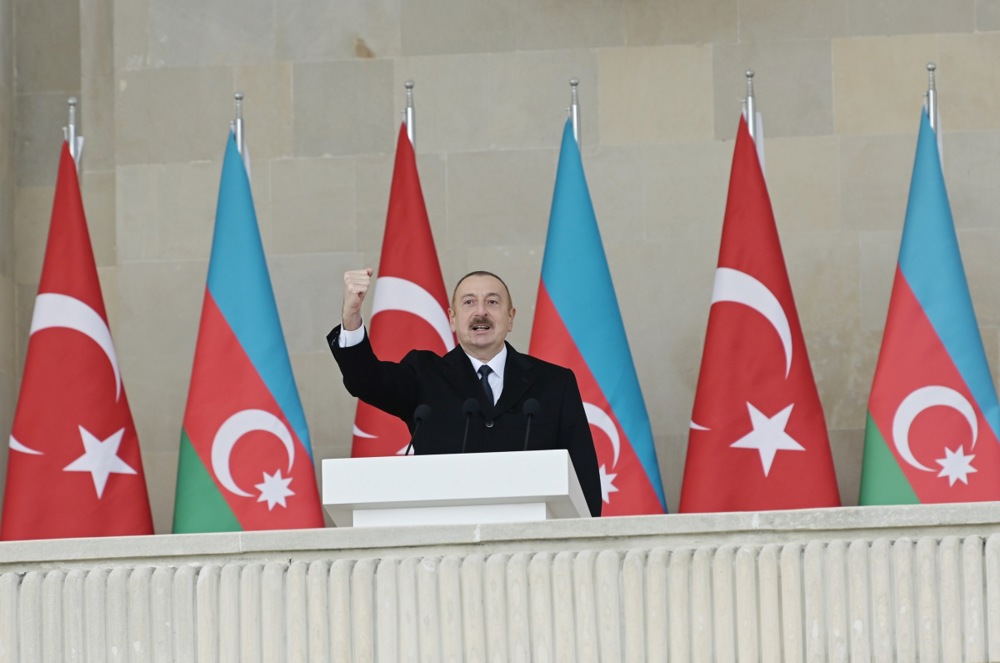One of the most significant events of the war took place last week – in the least-known corner of Ukraine.
On 24 July up to fifteen Shahed-136 drones struck Reni, a Ukrainian port on the Danube, some 60 miles inland from the Black Sea. It was part of the new wave of Russian attacks on Ukraine’s cargo shipping infrastructure – including other ports like Odessa, Chornomorsk and Izmail – following the recent collapse of the so-called “grain deal” brokered by Turkey and the UN last year.
Now, hardly anyone among the Western political, commentariat or analyst classes would have ever heard of Reni before pictures of its destroyed grain silos hit the news on Monday. Despite the endless current writing and discussion on the Ukrainian conflict and the region, nothing much has changed fundamentally since the days of Neville Chamberlain and his famous 1938 remark about far away countries of which the West knows little.
With attention riveted mostly on the events at the front and in Kyiv, and directed almost exclusively by the flows of the vast wartime propaganda machinery, who would be aware of this town of Reni, tucked away in the most obscure nook of the Budjak, the bit of Ukraine that stretches south of Odessa to the Danube?
And yet, Reni is of utmost strategic importance. It sits at the very juncture between Ukraine, Romania and Moldova, and plays a key role as a logistics hub for Kyiv’s war effort. It has grain silos, fuel storage tanks, warehouses, and both road and rail connectivity. Its sizeable port facilities support not just Ukrainian grain exports but also inflows of military and other supplies (including fuel) from Nato, whose member state Romania sits just 400 metres across the river.
The Romanian-Ukrainian border runs through the middle of the Danube – so, technically, the Reni attack came within 200 metres of Nato territory, easily the closest “shave” with the Alliance so far. A Romanian merchant ship appears to have actually sustained minor damage. More than arguably any other Russian action since February 2022, this strike carried an enormous risk of triggering a war with Nato. Why would Moscow order such a reckless operation which could have had such dire consequences?
Two explanations stand out. Firstly, this event may indicate a high-level Russian decision to escalate the conflict with Ukraine. One of the most important – but never discussed – strategic questions at play in the Ukraine war is Russia’s scope for conventional escalation. Ever since the Ukrainians broke the back of Russia’s initial assault on Kyiv last year, followed by the successful Ukrainian offensives in Kharkov and Kherson, a pernicious belief has taken hold in the West that Russia has reached the limit of its non-nuclear military capacities.
The failure of Russia’s massive missile strike campaign to knock out Ukraine’s energy grid in the winter or to impact in any fundamental way Kyiv’s war effort has likewise contributed to the sense of a “maxed-out” Russian military machine. The Ukrainian summer offensive this year might not achieve the hoped-for breakthrough, but neither can Russia do much more critical or unsustainable damage in return – or so the story goes.
But in the Reni attack we may see a strategically-significant expansion of Russian targeting. Rather than simply an occasional attack conducted in the wake of the collapse of the grain deal, this may mark the start of a new effort to suppress the vital logistical corridors that physically connect Ukraine to Nato supply routes.
The main one is in the west of Ukraine, running into Poland, with a secondary branch from northern Romania. The other one is down south by the Black Sea, running from Romania across the Danube to Odessa.
The western route would be exposed to attack from nearby Belarus, where Russia has now re-located part of the Wagner force as well as nuclear weapons, and which it has used before as a base for airstrikes into Ukraine. Meanwhile, the Reni strike has just demonstrated that Russia has both the means and the willingness to target Ukraine’s southern supply corridor.
Beyond this military rationale, the second – and perhaps concurrent – explanation for Reni might be to see it as a political move by Russia. This may well turn out to be much more dangerous. Moscow might have concluded – based on its analysis of Romanian policy and its internal socio-political situation – that bringing the war literally metres away from the Nato country’s border would send shockwaves through its polity.
The fact that Reni is also next to Moldova, with all of its complex problems including Transnistria (which hosts Russian troops), only compounds the political ramifications. The Russians very likely knew exactly what they were doing, in relation to Romania, by attacking Reni at this point in time.
After all, as far as this war is concerned, Romania is the dog that didn’t bark. Whereas all Nato countries on the Eastern flank from Finland to Poland have taken very explicit and aggressive stances against Russia, including publicising their substantial military aid to Ukraine, Romania has been all but silent on such matters.
Officially, Bucharest, which is technically aligned to all of Nato’s formal positions, has adopted a policy of so-called “discretion” over its alleged aid to Kyiv, with officials suggesting it has indeed been helping out but without offering specifics. As a result, Romania has been almost completely absent from the international conversation on the Ukraine war, beyond parroting official Nato lines. Something very special has been happening with Romania’s policy ever since Russia invaded.
The simplest explanation, embraced in many quarters, is that this is first and foremost a case of strategic and policy incompetence at the highest levels, starting with the country’s unresponsive and aloof president. Romania has hardly had a foreign policy to speak of in the years after its entry into Nato and the EU, preferring to simply mimic and align with French and German positions as the case may be, and to limit its defence policy to buying US weapons off the shelf. No wonder, such critics say, that the onset of war in Ukraine would have completely paralysed the Romanian foreign policy “establishment” and found it wanting.
Another reading of the situation might be that Romania has effectively reverted to its traditional non-committal approach of trying to balance between the main forces at play. In this interpretation, Romania is limiting its military assistance to Ukraine, or is avoiding taking strong public positions on it, in an effort to not antagonise Russia in the way that Poland or the Baltics have done. This cautious strategy would perhaps hope to retain some residual credentials with Moscow – in the eventuality that the latter does not “lose” – as one of its less extreme adversaries.
Finally, and potentially most alarmingly, Romania’s “ostrich” approach might be informed by what its second-rate leaders perceive to be an internal political challenge from the rising new national conservative opposition party, the Alliance for the Union of Romanians. AUR, which has recently shot to second place in the polls, supports Nato and condemns the Russian invasion but is concerned with the rights of ethnic Romanians in Ukraine (allegedly infringed by Kyiv). It strongly favours peace as the overriding objective for Romanian policy with respect to the Ukraine conflict. The Left-Right coalition government might well judge that a more “militaristic” foreign policy of stronger overt support for Ukraine would be seen as warmongering by the electorate and play into AUR’s hands.
With both European, local, parliamentary and presidential elections due to take place in 2024, the political stakes in this key Nato country are very high indeed. With its proven abilities in hybrid/political warfare, Russia likely understands this perfectly as well. The Reni attack heaps political pressure on Bucharest, by playing on the Romanian population’s legitimate fear of war, on the vulnerabilities created by the government’s failure to explain the stakes of the war to its own people, and on the antiwar message of the opposition.
This is a significant political weakness in Nato’s frontline, of the Romanian government’s own making, which Moscow will not hesitate to exploit if it can. Reni might be just the beginning. Any solution – especially looking towards the 2024 Romanian elections – should avoid a further radicalisation of internal political strife, looking instead to build more acceptance, trust and consensus across the political spectrum.
In the 19th century, Clausewitz famously said that “war is the continuation of politics by other means”; in the 21st, we should recognise that the two coexist.
Gabriel Elefteriu FRAeS is deputy director at the Council on Geostrategy in London and a fellow at the Yorktown Institute in Washington, D.C.






